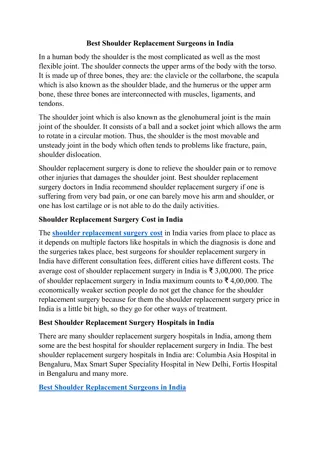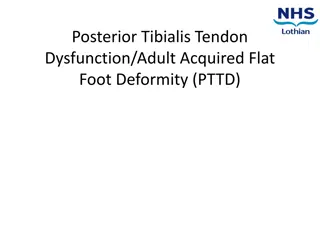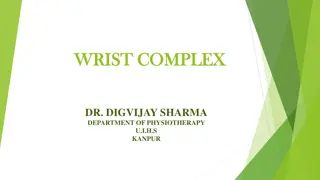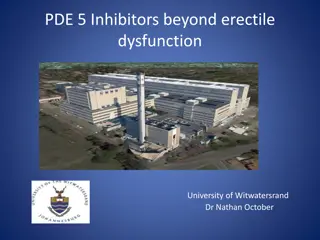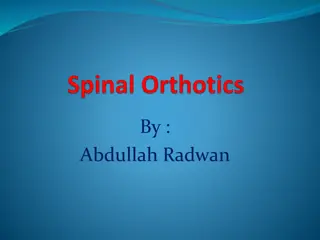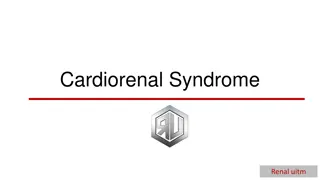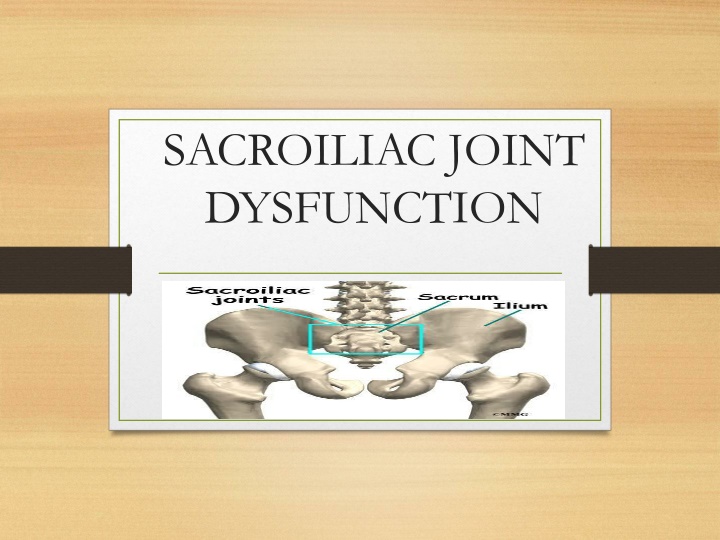
Sacroiliac Joint Dysfunction
Sacroiliac joint dysfunction can cause low back pain due to abnormal motion in the SI joint. Learn about its etiology, clinical features, and diagnosis for effective management.
Download Presentation

Please find below an Image/Link to download the presentation.
The content on the website is provided AS IS for your information and personal use only. It may not be sold, licensed, or shared on other websites without obtaining consent from the author. If you encounter any issues during the download, it is possible that the publisher has removed the file from their server.
You are allowed to download the files provided on this website for personal or commercial use, subject to the condition that they are used lawfully. All files are the property of their respective owners.
The content on the website is provided AS IS for your information and personal use only. It may not be sold, licensed, or shared on other websites without obtaining consent from the author.
E N D
Presentation Transcript
SACROILIAC JOINT DYSFUNCTION
SACROILIAC JOINT DYSFUNCTION Sacroiliac joint (SIJ) dysfunction generally refers to pain in the sacroiliac joint region that is caused by abnormal motion in the sacroiliac joint, either too much motion or too little motion. Sacroiliac joint dysfunction also known as SIJ, Sacroiliac joint pain, SI joint inflammation, Sacroiliac joint disorder, Sacroilitis, Sacro iliac joint sprain etc.
Sacroiliac joint pain is common cause of axial low back pain (LBP) affecting between 10%- 25% of people. Sacroiliac joint dysfunction are the fourth common cause of LBP & Pelvis. ETIOLOGY- The SI Joint can be significant source of LBP etiologies of sacroiliac pain include - spondyloarthropathy, crystal arthropathy, septic arthritis, trauma, pregnancy diathesis and mechanical SI joint dysfunction.
Sacroiliac joint dysfunction has been proposed as a possible etiology of sacroiliac pain. Precipitating factors for the development of SI Joint dysfunction- may include muscle imbalance between the hip flexors & extensors or between external & internal rotators of the hip, leg length imbalance and biomechanically abnormalities such as excessive subtalar portion.
CLINICAL FEATURES- The patient with SI Joint inflammation classically describes low back pain below L5. The pain is usually restricted to one side but may occasionally bilateral. The SI Joint disorders commonly refer to the buttock, groin and posterolateral thigh. Occasionally SI Joint pain refers to the scrotum or labia. LBA with radiculopathy. Clinically the patient has deep seated buttock pain, difficulty in negotiating stairs and problems rolling over in bed, with a traid of signs pain over the -
,SI joint, tenderness over the sacrospinous and sacrotuberous ligament, and pain reproduction over the pubic symphysis. Pain in posterior aspect of SI Joint. DIAGNOSIS- Physical examination a) Palpation In physical examination, try to determine if the sacroiliac joint is cause of pain through movement of the joint. If the movement recreates the patients pain, and no other cause of pain can explain the patient pain and
b) X-ray c) CT/ MRI d) Special test- Faber s test / Patricks test /Figure 4 test Faber s test- The patient lie supine, and the examiner places the patient test leg so that the foot of test leg is on top of the of the opposite leg. The examiner than slowly lowers the knee of the test leg toward the examining table. A negative test is indicated by the test legs knee falling to the table or atleast being parallel with the opposite leg.
A positive test is indicated by the test legs knee remaining above the opposite straight leg. If positive, the test indicates that the hip joint may be affected, there may be iliopsoas spasm, or the sacroiliac joint may be affected.
TREATMENTS- Medications- Analgesics ( acetaminophen) NSAIDs ( ibuprofen / naproxen) Analgesics with steroids to reduce inflammation & swelling with associated pain.
PHYSIOTHRAPEUTIC MANAGEMENT- The therapist may design an exercise program to improve the strength and control of back & abdominal muscles. 1) Sacroiliac joint exercises- Due to complex nature of the SI Joint & its surrounding structures, treatment must focus on the entire abdomino-lumbo-sacro-pelvic hip complex addressing articular, muscular, neural fascial restriction , inhibition and deficiencies.
SI Joint exercises- Core stability training should be includes. Training the transverse abdominis muscle may be due to significantly reduced laxity in the SI Joint. Stretching & soft tissue therapy are useful in correcting pelvis / SI Joint imbalance. 2) Muscle energy technique- may also be helpful, as may osteopathic manipulation. 3) Sacroiliac belt- some patients benefit from wearing a spinal brace called a sacroiliac belt.
4) Taping- It is another method, the tape provides support to the SI Joint & alleviates pressure on the nerves in this region. Pain relief is felt immediately & continues to improve with use. 5) Ice pack - initially treatment recommendation will typically include use of ice or cold packs. 6) Application of heat- may help the heating process, but not during the acute, high intense pain time frame. 7) Electrical modalities- IFT, TENS, Ultrasound therapy, LASER, SWD.

